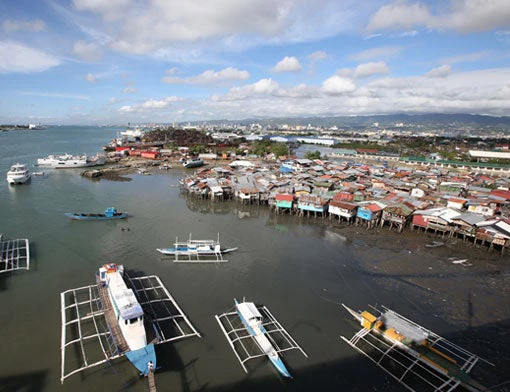 Communities living along the coast in Cebu province are at highly at risk to the impacts of climate change.
Communities living along the coast in Cebu province are at highly at risk to the impacts of climate change.
Having grown up in Cagayan, a province in the northeastern most part of the Philippines, our lives have always been defined by the wet and dry season as well as typhoons. My childhood memories are dotted with events when our village would be flooded or hit by typhoons. There were times when we had to evacuate and once permanently relocate following a catastrophic flooding of the province due to the swelling of the Cagayan River. My grandfather, then a tobacco farmer, would despair as his crops were frequently wiped out due to either flooding or drought. I recall that he once said that perhaps the seasons were also going senile (the popular saying in Filipino is “ulyaning panahon”) as they cannot seem to remember when they are supposed to occur.
Only many years later did I begin to understand that our experiences are part of the changes that are happening globally. And these changes have formed a collective consciousness influencing how we live our lives now and into the future. In the Philippines, there is an increasing understanding of the impacts of climate change. Accounts of damages and lives lost due to typhoons, flooding, and droughts are wide-ranging and have become all too familiar among Filipinos.
It has almost been a year since the devastation by typhoon Yolanda (International name: Haiyan) brought damage and loss of lives at a scale and magnitude never before experienced nor imagined. Even before Yolanda, Filipinos have begun referring their disaster-related experiences to typhoon names, such as “na-Ondoy kami” meaning they were victims of Ondoy (International name: Ketsana).
We have also heard of similar stories of farmers losing their crops due to drought and of fisherfolk experiencing fish kills during dry seasons or following a flooding event in other parts of the archipelago. We are also frequently warned of impending energy and water crises due to low water levels in dams and reservoirs.
Informal settlements in Metro Manila also bear the brunt of climate change impacts whether from flooding, water unavailability, and food and energy insufficiency. Whether the affected households belong to the rural communities or those in the cities, the burden of these impacts are largely borne by the poor.
In recent years, the Philippines has been considered a high performer in the region in terms of economic growth, exceeding regional averages. These gains however can be reversed by the impacts of climate change, increasing the difficulties of attaining the Philippines’ goals of sustained inclusive growth and further poverty reduction. We have witnessed the exodus of families moving out of poverty only to be reeled back in due to calamities that befell them. Perhaps the questions that beg to be answered now are how do we strengthen them so they are able to withstand better the impacts of climate change and calamities? And how do we keep them from becoming poor again?
It is good to see that the government is taking the initiative to begin answering these questions right at the core of the governance and institutional processes - in planning and budgeting. The country has not stopped at issuing strategies and action plans. It has also begun to finance initiatives that address climate impacts through its own budget.
Starting with the 2015 budget process, policy makers and the general public will be able to identify and monitor public budget spending for climate change response in detail through a new tagging initiative. The government has shown substantial progress in mobilizing its own resources for climate change. However, given the magnitude of the climate change problem, the Philippines will need to expand its resource base and increase the efficiency of existing resources. This will require building upon the lessons learned during the 2015 budget process to strengthen the tagging and tracking of climate change spending for the 2016 budget year. A sustained and expanded effort to use a climate lens during the Government’s planning and prioritization process is also necessary. Doing so would provide the basis for attracting further resources – both international and domestic – as well as private and public.
A lot of things have been done but are there other opportunities to do more? Share your thoughts and ideas. I would love to hear from you.


Join the Conversation